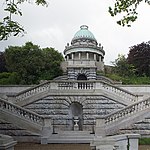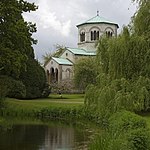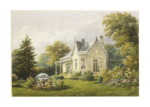Gothic Ruin, Frogmore
Buildings and structures in Windsor Great ParkFrogmoreGrade II* listed buildings in BerkshireHome Park, Windsor

The Gothic Ruin is located at Frogmore, in the Home Park of Windsor Castle, in Berkshire, England. Designed by James Wyatt in the late 18th century, the structure is a folly, comprising a summer house enveloped in the trappings of a Gothic ruin. It is a Grade II* listed structure.
Excerpt from the Wikipedia article Gothic Ruin, Frogmore (License: CC BY-SA 3.0, Authors, Images).Gothic Ruin, Frogmore
Frogmore Drive,
Geographical coordinates (GPS) Address Nearby Places Show on map
Geographical coordinates (GPS)
| Latitude | Longitude |
|---|---|
| N 51.4752 ° | E -0.5963 ° |
Address
Frogmore Drive
Frogmore Drive
SL4 2JG
England, United Kingdom
Open on Google Maps











